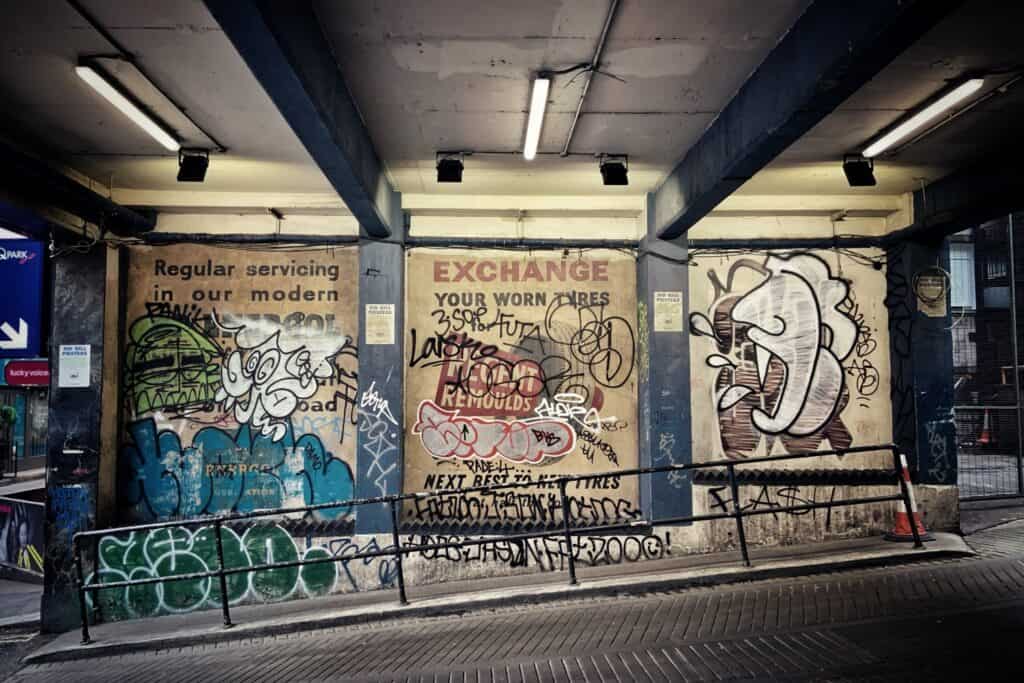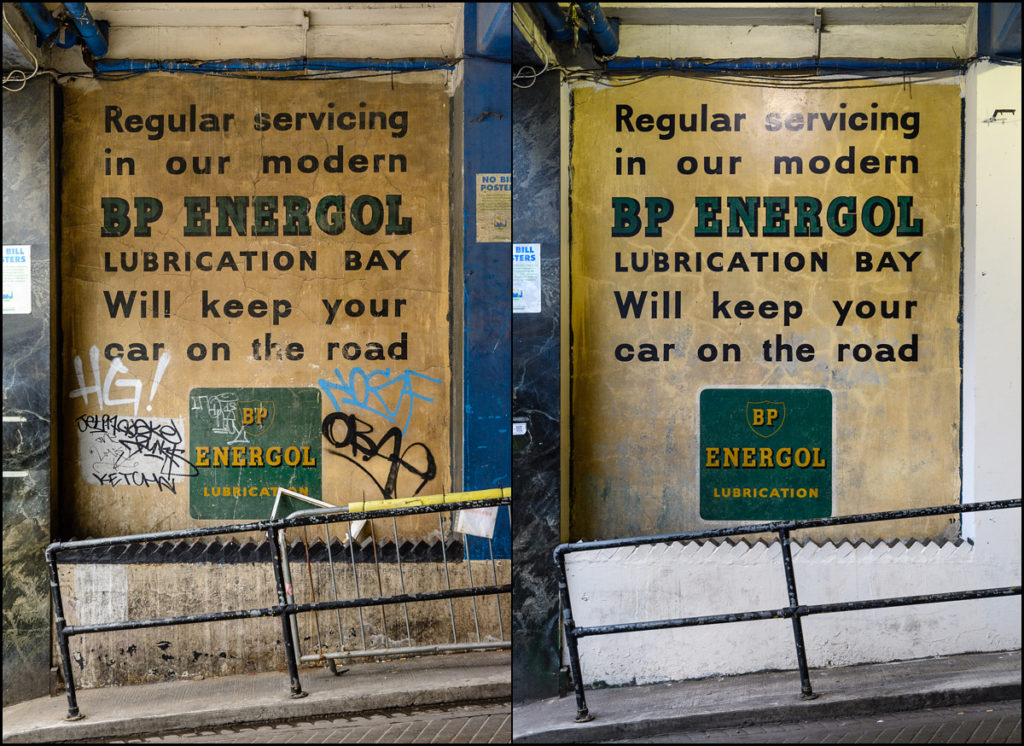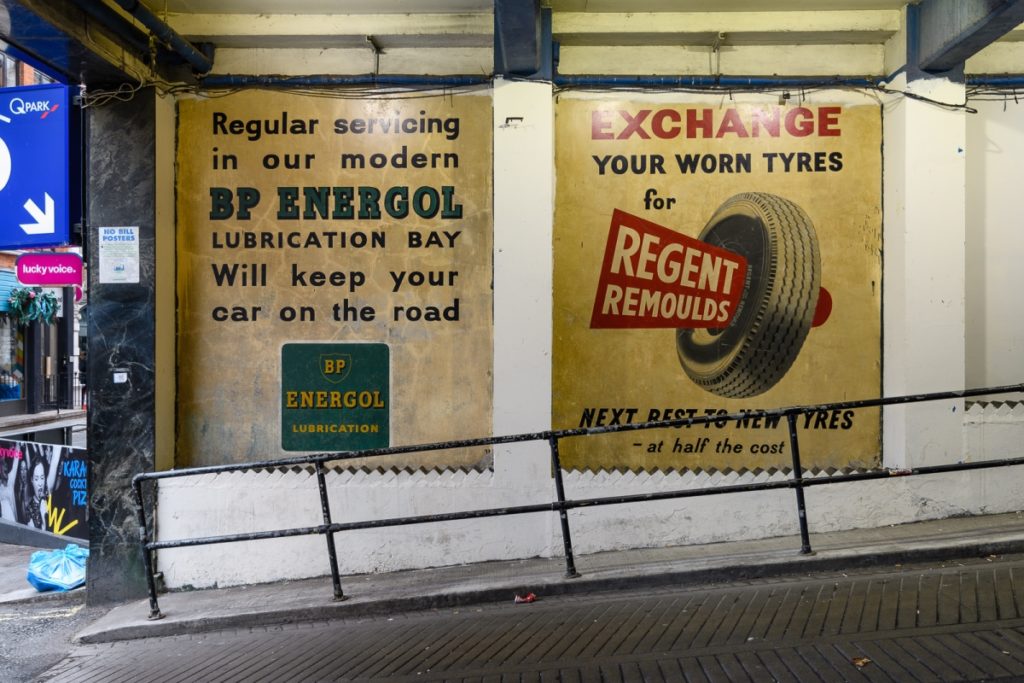13 Sep 2021
Return of the Poland Street Ghost Signs
What a difference six months makes. The Poland Street double looked to be dead and buried, but through local pressure and council funding, they’re back. As I stated in my piece about the whitewashing, “in theory the signs could be brought back with the right treatment”. So here’s a look at the practical application of that theory by art restorers Plowden & Smith.

Preparation & Cleaning
The whitewashing was to cover the graffiti shown above. As a result there were two layers of paint on top of many parts of the ghost signs. Before starting work, painting conservator Dr Rita L Amor, carried out some tests. These were done on non-critical patches of wall to ensure confidence in the final process. The selected approach involved a mixture of mechanical techniques and solvent-based solutions.


Repairing & Repainting
Once the paint was successfully cleaned there were steps taken to fix structural issues with the wall. These were most evident in multiple fine cracks visible across both pieces. Once these had been filled in, the final stage was touching up parts of the original paintwork on the signs themselves. Some of this was necessary to cover areas where wall repairs had affected the original paint. It then seems that this was extended to other areas for greater consistency across the entire sign.

Protecting for the Future
The final stage in the process was to apply a sacrificial layer of varnish. This is a protective layer that ensures that any future graffiti can be easily removed without affecting the restored signs beneath.
The result is the return of the signs with relatively little interference in their original appearance. I think that a lot could be learned from this for future ‘restoration’ efforts in order to avoid the worst of their kind. Bravo Dr Amor and her team at Plowden & Smith, and Westminster Council for funding the work.
To finish, here are some before and after comparisons using photos from Roy Reed, co-author of Ghost Signs: A London Story.
This is a link to other articles about ghost signs preservation from this blog.



With thanks to Plowden & Smith for their support in writing up this account of the process, and to Adam Orton and Roy Reed for their photography.


